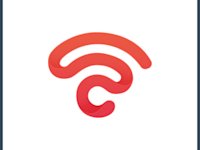How Much Does It Cost To Start a Coffee House?
Coffee houses are a great business idea, but they take some brain power initially. Opening a coffee house involves property hunting, designing, purchasing equipment, and marketing. Learning how to open an ice cream shop can provide valuable insights for opening a coffee house, especially in understanding customer preferences and location strategies. And that’s all without designing your drinks menu and choosing coffee beans. So, how much does it cost to start a coffee house?
Establishing a budget to start with is a fantastic idea so that you don’t have any nasty financial surprises later. Besides, you want to know if your business plan is a good or iffy idea. In short, it’s great that you are taking such a proactive interest in your budgeting.
Opening a coffee house requires careful planning; exploring loans, grants, or investors can help you learn how to finance a restaurant effectively. In this guide, we’ll give you a full rundown of the costs of opening a coffee house. Don’t worry; this is finances made easy. In around 10 minutes, you’ll learn the average startup cost, failure rate, and reasons, as well as a cost breakdown summary. We’ll get you set up with all the essential information before you know it.
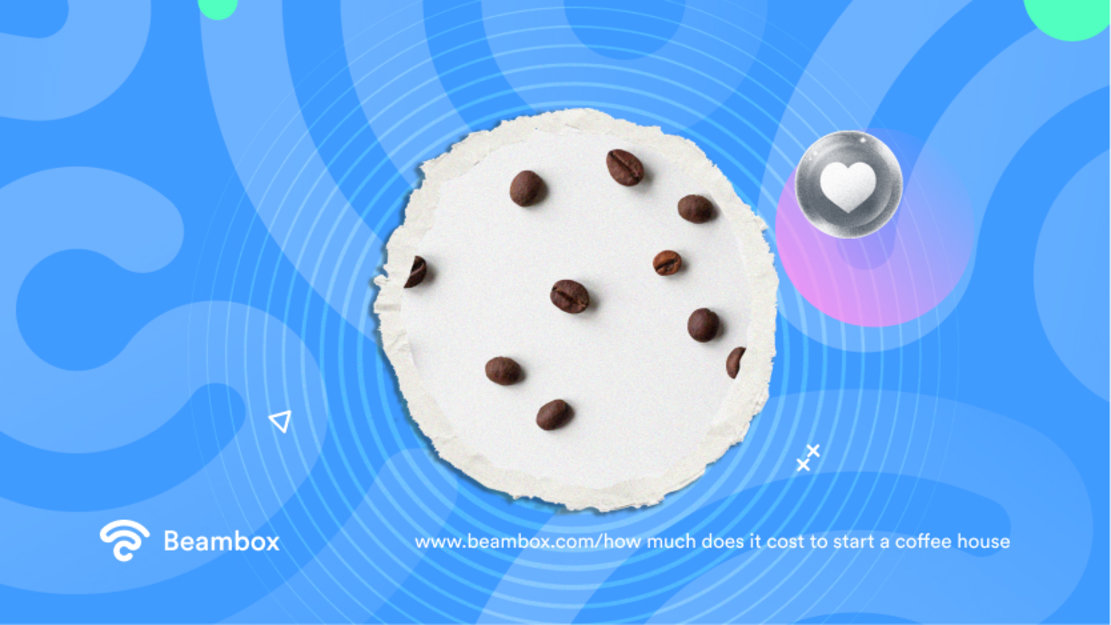
Why Are Coffee House Businesses Popular?
A coffee house business is as classic as it comes and is popular for one reason: everybody likes coffee shops. Just look at Starbucks; even non-coffee drinkers like Starbucks. A good coffee shop isn’t just a place to drink coffee but a community hub.
As a coffee shop owner, you run a socializing spot, remote working place, and study space simultaneously. It’s a welcoming spot when you miss your bus and have to wait an hour — otherwise, in the rain.
After long walks, a refreshing drink is the first thing you think of when seeing a coffee house banner. It doesn’t take a genius to see that coffee houses are cornerstones in society; everybody uses them at some point.
Aside from appealing to the masses (we aren’t exaggerating; just ask your friends), coffee houses are also easy to start. While you might be laughing at that statement in your current launching phase, it’s true in comparison to other businesses. You can rent commercial space and organize just a few licenses, like retail, without tons of stock to manage.
If it goes wrong with a rental space, who cares? You pay up or hopefully break even and then just move on with a new venture. Coffee houses are notoriously fluid in that sense. How many independent coffee shop businesses have you seen come and go near you? There’s always demand and minimal commitment needed to open them.
So, opening a successful coffee house is where it really gets tricky. This brings us to our next section because we’re sure you don’t want a temporary cafe on your hands.
What Is the Failure Rate of Coffee Houses?
The savage truth, according to Majesty Coffee, is that 60% of cafes fail in their first year. That really puts the number of coffee shops you saw come and go into perspective, doesn’t it? So, what does that statistic mean for you?
As a new coffee shop owner, your chance of running a cafe for over a year is 40%. That’s relatively low. Because of this rather dreary statistic, you really need to establish a solid coffee shop business plan.
Finding a successful coffee shop business model is vital; these early stages could make or break your venture.
These are the main things that make the difference between coffee houses that survive and fail their first year:
- The coffee shop location.
- The initial investment (in marketing, decor, staffing, etc.).
- The quality of the coffee shop equipment (e.g., a coffee roaster that doesn’t burn beans).
- The customer experience.
- The wider economy and social situations (because, no, sometimes it genuinely isn’t your fault).
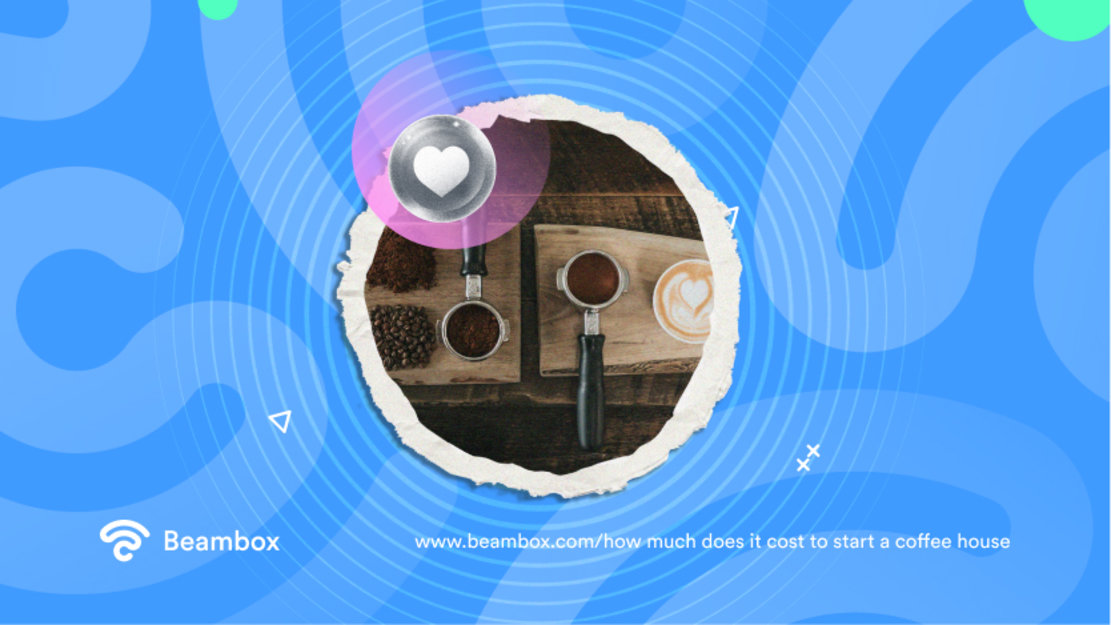
5 Steps of Opening a Coffee House
The steps of opening a coffee house align closely with how to open a restaurant, emphasizing location, menu planning, and creating a welcoming atmosphere. The cost to open a coffee house is pretty straightforward. However, before we get to that stage, let’s look at the overall steps to opening a coffee house. It helps to understand the process so that you understand where all the budgeting breakdown comes in.
1. Establishing an Idea
You’ve got to be in it to win it. The first step is coming up with an idea that is bold and unique enough to compete. What’s your novelty? Who is your target customer?
Creating a water-tight business plan is your first step. Your idea needs to be worth carrying to the next stage.
2. Creating a Budget
The next step is budget. How much have you saved for this business plan? Can you get investors? Or will you rely on a business loan?
Creating a budget is a vital step in the process. Unless you have unlimited funds, and even then, a budget would give you direction, budgeting is a necessary step. Of course, you already know this — it’s why you’re here. So, congratulations on taking that smart step.
3. Securing a Venue
Your next step is to secure a venue. You should always do some location research first, though. Your location can make or break your coffee house, so really pay attention to this stage. Don’t rush; do your research.
4. Designing Menus, Decorating, and Finalizing Details
This step is equally important. It’s time to finalize all the exciting details and bring your idea to life. This is a nice stage, as you get to see real progress without the pressure of customers.
You’ll get to decorate your venue and really bring your brand to life. You’ll also design the menus, choose the coffee beans and any food, and furnish your shop.
5. Launching and Reviewing Marketing Efforts
No, by launching, we don’t mean launching your business. The final stage before opening should be launching your marketing. This could mean having an opening night, or it could mean investing in social media marketing and giveaways beforehand. Social media competition for a date night for two, anyone?
These marketing efforts won’t just stop once you open your doors. You will continue to market your business and review your strategy for long-term success.
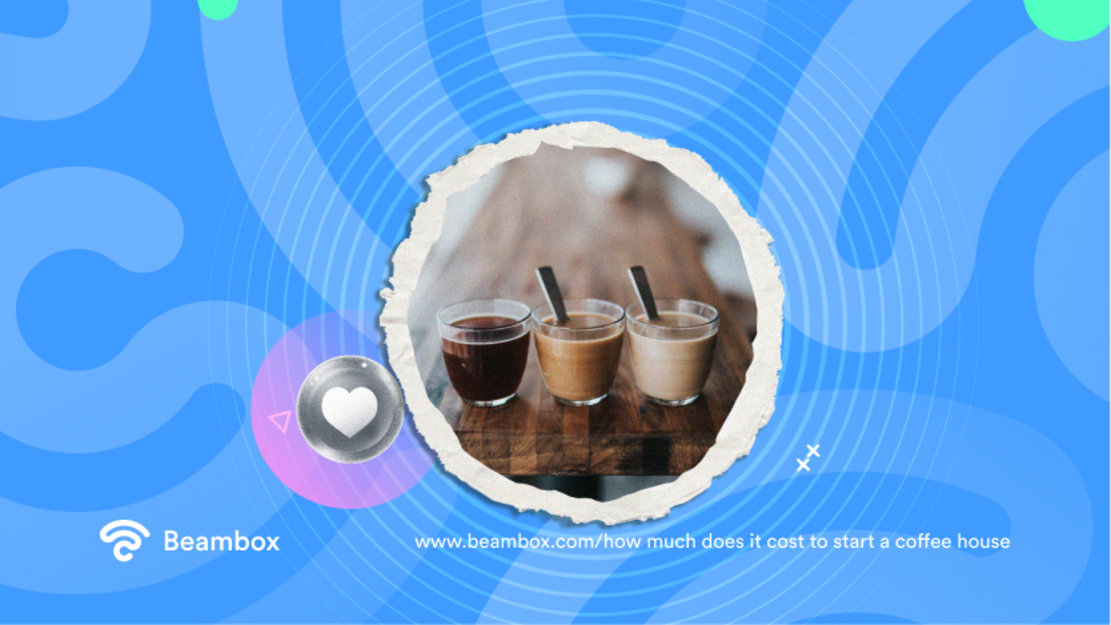
Equipment and Stock Costs of Starting a Coffee House
Equipment will always be a big expense, especially with coffee shops. Coffee machines aren’t cheap, and purchasing stock upfront isn’t either. With stock, it massively depends on where, what, and whom you source from.
As a general rule, though, we can give you guidance for equipment prices. Here’s all the practical stuff you’ll need to buy:
- Fridges for milk storage: $500-$1,500
- A commercial espresso machine: $2,000-$5,000
- A commercial coffee brewer: $500-$1,500
- A commercial coffee grinder: $500-$2,000
- A cash register: $600+ a year, including software subscriptions
- Cleaning supplies: $100
The Cost of Decor
Learning how to identify needless costs in your hospitality business can help you streamline operations and boost profitability effectively. Decorating your coffee house doesn’t have to be hugely expensive. However, with that said, we would recommend establishing a sense of uniqueness and novelty. You must emphasize what makes your shop different in such a saturated field. Don’t run the risk of joining the 60% club just because your decor is lackluster.
When considering how much to start a coffee shop with, you need to calculate how much work the venue needs.
Our advice is to brainstorm themes and consider what will draw in the most foot traffic. You can look at far-projected trends and really lock in a brand theme that will hit. This way, no matter your budget, you’ll get results and have a sense of uniqueness.
Here are some standard costs to think about:
- Up to $600 to paint an entire medium-sized coffee shop
- $1,000+ on seating, be that bar seating or low-lying coffee tables
- Up to $100 for bannering and exterior signage
- Extra for miscellaneous furnishings that fit your theme, e.g., gilded mirrors, plants, or artwork
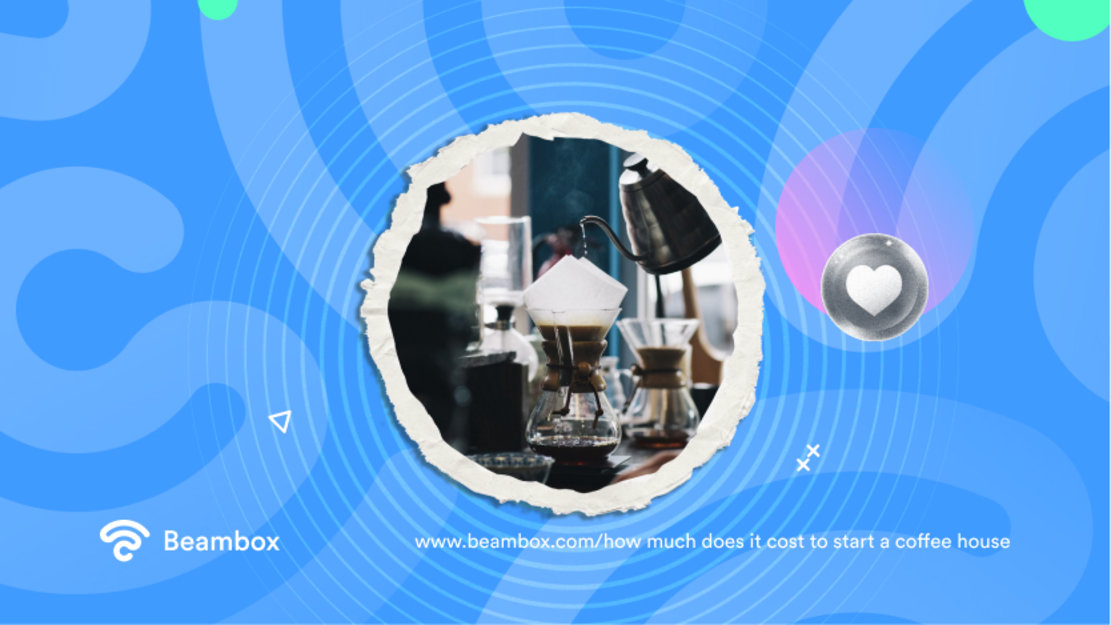
The Hidden Costs of Coffee: Licensing
Coffee house supplies and coffee equipment aren’t the only expenses. There are hidden costs of coffee to consider aside from the obvious pieces of equipment costs. You’ve also got licenses to consider.
These pesky little loopholes are the difference between a legal and illegal coffee shop. If longevity is your goal, we’d recommend paying attention.
Licenses vary depending on your state or province, let alone your country or region. You’ve really got to be on the ball with these things. The best way forward is to ring your local council for a comprehensive list. These are the most common ones to consider:
- A business license
- A food service license
- A sign permit
- A health permit
You may need a resale permit for a sales license and an alcohol license to serve alcoholic beverages. Those Irish coffees could make the latter a worthwhile investment.
How Much Does It Cost To Start a Coffee House With Marketing?
Always include marketing in a coffee house business plan; as a general rule, invest at least $1,000 upfront. There’s no point in creating a coffee shop without telling people about it. That’s honestly the worst, most self-sabotaging secret you could ever create.
So, how much does it cost to start a coffee house with marketing for each different strategy?
1. DIY: $0 - $200
So, you are hell-bent on going solo to save cash? Good for you. We’d advise you to go this route only if you have some degree of pre-existing marketing knowledge.
Play into your strengths, or be happy to invest 20 hours a week in developing strengths. And no, we aren’t exaggerating. We’d suggest spending two hours a day, five days a week, on marketing. And if you’re new to marketing, you should spend an additional two hours a day learning about marketing, at least initially.
DIY marketing is possible. There are tons of tools out there to help you, like Meta Business Suite or social media post ideas. Just make sure you put in the hours. We’d budget $0 - $200 if you take a DIY approach to allow for any tools you purchase.
2. DIY Meets More Expensive Investments: $500 - $1,500
What about a mid-road? That’s DIY meets expensive investments for you. Think tackling daily social media posts by yourself but paying for adverts in a national publication. Or paying for a billboard in a city center.
$500 - $1,500 is a perfect budget for someone opening a coffee shop the medium way. You are still running the show, but you are outsourcing for more expensive ads and publicity.
3. Outsourced: $3,000 - $70,000+
Outsourcing your marketing is the most expensive option. This could only cost around the $3,000 mark if you invest in a freelancer for a limited period. For instance, you could hire someone to cover a month before your launch and two months post-launch. Or it could cost as much as $70,000 a year to hire a full-time marketer.
Professional services are a much more hefty investment. However, you save time, and it may give your business more of a chance if you don’t have experience in marketing. You may wish to consider a business loan for this. And for it to be a justifiable ongoing cost, you really need to establish a lucrative business.
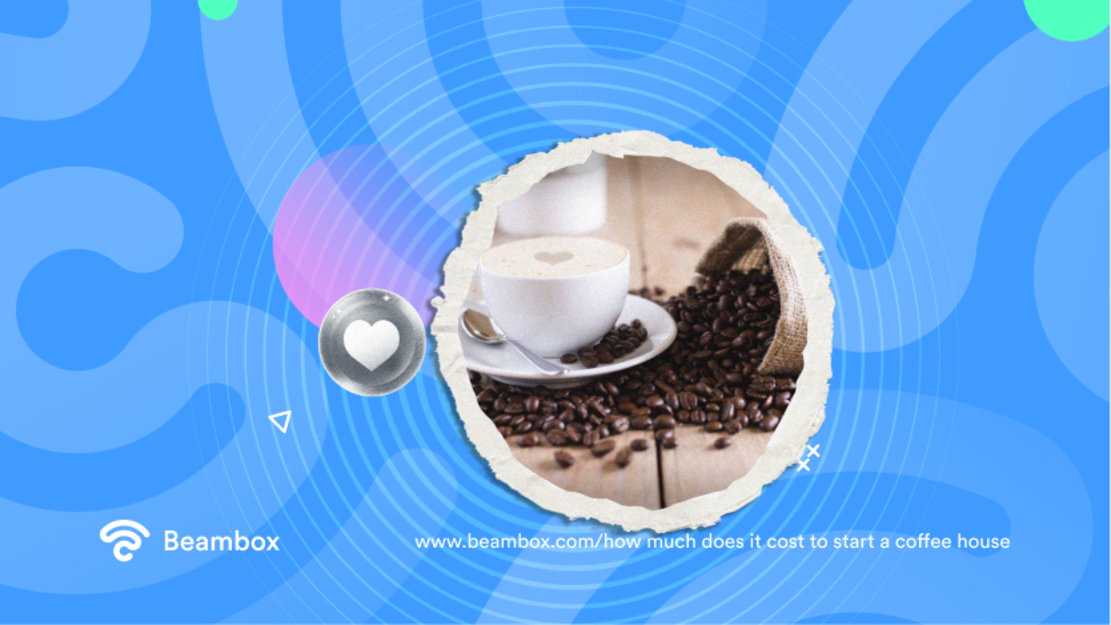
The Average Cost To Start a Coffee Shop
The average cost to start a coffee shop is around $150,000 to set up. That’s obviously if you are renting, not buying your shop, which could ramp things up to the millions.
$150,000 will include:
- All your equipment
- Some paid advertising and initial assistance from a freelance marketer
- Rent and initial staffing costs
- Your first and second stock orders
- All of your licensing
- Decoration and furnishing of your venue
- Your rent
You should also factor ongoing expenses into your calculated cost of opening a coffee house. Things like staffing, including initial training and hiring costs, and electricity bills should always come into play.
Don’t forget you may also need to pay a deposit to rent a shop. A landlord may even ask that you provide anywhere up to six months in advance to rent a commercial space.

Beambox: A Solution for Coffee House Marketing
One of the main costs we covered was marketing. Without marketing, nobody will even know about your coffee shop and what it offers. It’s a super vital thing to consider and invest in.
In fact, we’d go as far as to say that without it, you’ll sink into that 60% failure statistic. The same goes for loyalty programs: you must invest in attraction and retention.
That’s where we come in. Here at Beambox, we run an all-in-one WiFi marketing software. As a coffee house, your greatest power isn’t your coffee beans but your WiFi. Every successful business owner knows WiFi is a huge draw for customers, so why not make it work for you?
We specialize in a type of strategy called a captive portal. A captive portal software runs alongside your guest WiFi network, triggering a webpage barricade when customers click to join. The only way for guests to proceed is to comply with a form on the webpage. And, you guessed it, you get to design the form.
This means you can request valuable marketing information, such as email addresses, in exchange for WiFi access. You can then use those details to invest in marketing campaigns. How good is that?
Start your Beambox free trial today. Now that you know the answer to “How much does it cost to start a coffee house?” widen your net.
Get Started With Free WiFi Marketing
Beambox helps businesses like yours grow with data capture, marketing automation and reputation management.
Sign up for 30 days free
